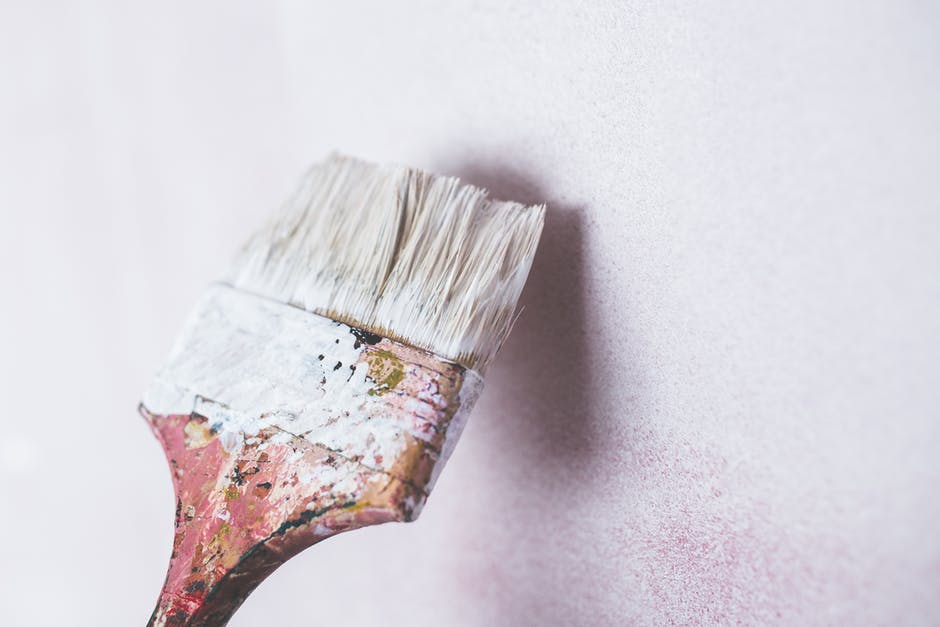Property Management Tips – How to Paint Over Dark Surfaces

By RPM Central Valley
Spring is typically the one time of year when most owners review their Central Valley Rental Properties, make improvements, and get them ready to be rented for the coming year.
Unfortunately, one common thing that many landlords and owners will have to do is paint the inside of their rentals and it’s not always an easy thing to do especially if the previous tenant had painted one or more walls dark colors.
Thankfully, painting over dark colors is an easy thing to do if you follow this process:
1. Start with the right supplies
To save time and sanity, you’re going to need more than an old roller and a paintbrush. An investment in the right supplies will make for a (literally!) smoother process throughout.
Start by selecting a roller with the right nap, or thickness, for your project. The rougher the surface, the thicker your roller should be—thicker naps are designed to hold more paint in order to fill the crevices of bumpy surfaces. If your walls are dark but smooth, opt for a thinner nap or a foam roller. It’ll give smooth coverage (and is usually ideal for indoor walls).
Next, choose high-quality rollers. Higher-end products tend to deliver smoother, thicker paint coats than their cheaper counterparts, which can have spottier coverage.
Finally, choose the right paint. Alex Kusum of Eric Kolsum Painting in Minneapolis, MN, recommends acrylic-based paint.
“These days it works just as well as oil-based paint, and it’s safer for the environment,” he says.
2. Prep the surface
Not feeling the chalkboard paint craze? Covering it up will take a bit of finesse. To paint over a writable surface—or any thickly applied coating—be sure to sand the edges until they’re smooth. Otherwise, you’ll be able to see the lines underneath no matter how many coats you slather on.
You’ll also want to clean the walls—the cleaner they are, the smoother the paint job. Next, run painter’s tape along the edges between the wall and ceiling/baseboards, making sure the corners are fully covered. And, of course, lay drop cloths on the floor. (You knew about that part, right?)
3. Pick the right primer
Hit up the paint supply store these days, and you’ll notice that primers come in a variety of hues. Intuition might tell you to opt for a gray (darker) primer to cover a darker color, but you should resist the urge. Choose white primer when going from dark to light, experts say, and gray when going from light to dark.
Krista Zobel, an interior designer at TreHus in Minneapolis, offers up this special trick: Mix a little paint with the primer. Adding some of your new paint color to the first coat can help to set the right tone from the get-go.
And make sure you don’t cheap out, Zobel adds. Quality primers contain more binders and pigments, which is what will help conceal the dark color underneath.
4. Use multiple coats of primer
Usually, you can get away with one coat of primer. But when it comes to painting over a dark color with a lighter one, two coats of primer(literally) put an extra layer between the colors and reduce the chances that the dark color will bleed through.
(Fun fact: Red is usually the most difficult shade to cover up. “Something with a red pigment seems to kind of pierce through the opacity of paint more than black,” Zobel says.)
Finally, don’t forget to let the primer dry completely before you start painting.
5. Lay it on thick
One common mistake DIY painters make? Spreading the paint too thin, Kolsum says.
“Always add more paint than you think,” he says. “You want heavy coverage when you’re rolling.”
Then, when you’re painting, roll in big “M” or “W” shapes rather than just up and down. This approach gives the paint a few seconds to dry rather than immediately covering it up again.
And remember: The more extreme your dark-to-light transformation, the more layers you’ll need to get the job done—and the longer the project will take. One wall will take one person about a half-day to complete, Kolsum estimates.
“Just keep putting layers on until the [dark color] is gone,” he says.
6. Take a break
One of the best parts of a painting project is the built-in break time. You’ve got to let the paint dry between layers, so sit back, relax, and enjoy a good book or take the dog for a walk between coats.
How long should you wait? Acrylic paint dries quickly—about 15 or 30 minutes depending on temperature and humidity, Kolsum says.
Get Central Valley Property Management
Tired of self-managing your rental properties? Contact RPM Central Valley today by calling us at (209) 572-2222 or click here to connect with us online.
